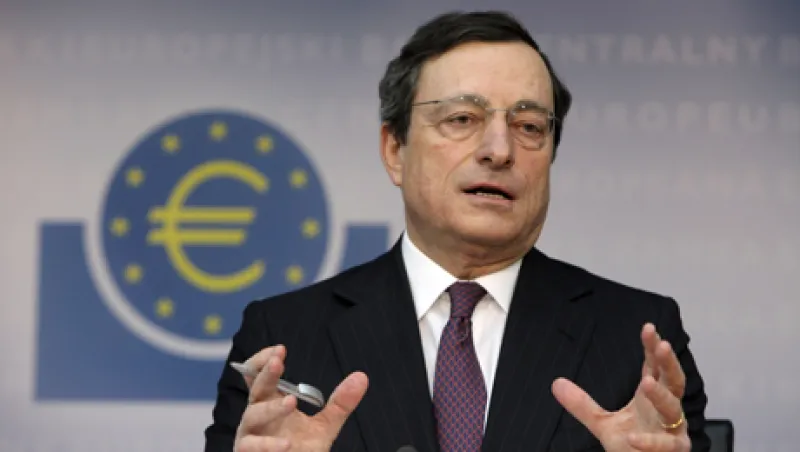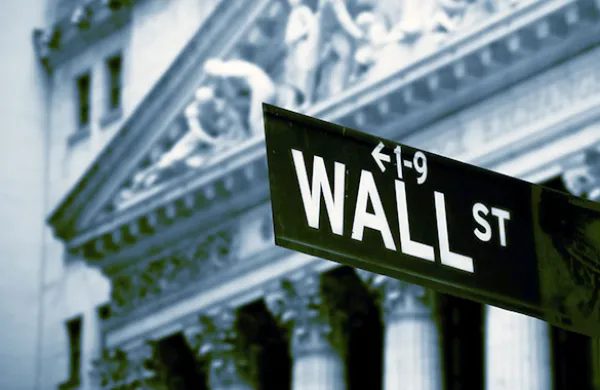The president of the European Central Bank predicted a gradual recovery in the euro zone this year in a cautiously upbeat press conference on Thursday that underlined the transformation in the region’s prospects since the dark days of December.
Mario Draghi’s guarded optimism gave fresh support to the recent and continuing rise in euro zone assets, including the single currency itself —whose appreciation has wrong-footed many hedge funds that had wagered on a decline.
“We expect the euro-area economy to recover very gradually in the course of 2012,” said Draghi in the Thursday press conference. “The very low short-term interest rates and all the measures taken to force the proper functioning of the euro-area financial sector are lending support to the euro-area economy.” The downside risks to the region were no longer “substantial,” he added, in his most optimistic press conference since taking the reins of power in November.
Mr. Draghi’s positive tone — and his revelation that there had been no discussion in the monthly interest rate meeting about a further cut in the ECB’s benchmark short-term rate — dampened expectations that it will fall below its current level of 1 percent.
Nomura summed up the mood by putting out a research note after the conference with the title, “Another cut coming? We are less sure now.” Jens Sondergaard, European economist at Nomura in London, said: “We still think the ECB will cut again next month. But rates may stay at 1 percent if data continue to surprise positively.”
Draghi’s press conference came minutes after the ECB announced that it was leaving its benchmark rate unchanged for the second straight month.
This contrasts with Draghi’s first two monthly rate-setting meetings as ECB president in November and December, when he reduced the cost of borrowing by 0.25 percentage points each time.
Economists credit the improvement in euro zone economic conditions since the last cut primarily to the president’s masterminding of a massive refinancing operation of the euro zone banking system on December 21. On that day the ECB made €489 billion ($638 billion) in three-year loans to more than 500 euro zone banks. By restoring banks’ trust in each other, it forestalled what many analysts saw as the rapid approach of another credit crunch that could have been worse than the one that followed the 2008 collapse of Lehman. The renewed faith in the banks prevented a free fall in euro zone business and consumer confidence.
The restoration of the euro zone’s fortunes — confirmed by survey data suggesting the region returned to growth in January after four months of decline — has pushed the euro back up against the dollar. Last month the eurodollar fell to 15-month lows, but by the end of Thursday afternoon in Europe, it was at $1.329, up a further 0.2 percent on the day. The FTSE Eurofirst 300 index of euro zone stocks was 0.25 percent higher at 1,073.53 — close to a 7-month high. The yield on the benchmark Italian 10-year bond, which frequently traded at above 7 percent late last year, fell 13 basis points (bps) to close the European trading day a tad below 5.5 percent. The yield on the Spanish 10-year inched down a further 3 bps to 5.20 percent.
The rise in the euro has, once again, caught out many hedge funds — several have periodically bet on the currency’s decline, and been proven wrong, since early last year. But despite being stymied by the recent sudden recovery of the euro zone economy, many hedge funds believe it will return to crisis by the end of 2012 — depressing the currency’s value. They say that continuing austerity measures, forced on euro zone governments by last year’s sharp fall in sovereign bond prices, will leave many economies struggling to grow.
Draghi acknowledged the continued sense of fear among analysts that the euro zone recovery might prove fragile, by saying his prediction of recovery was “subject to downside risks,” including “tensions in euro-area debt markets and their potential spillover to the euro-area real economy.” He also warned of the hazards posed by “possible adverse developments in the global economy, higher than assumed increases in commodity prices, protectionist pressures, and the potential for a disorderly correction of global imbalances.”
The Greek debt crisis remains unresolved — fostering continued tension in financial markets, the region’s biggest danger spots remain Italy and Spain, the two countries both sufficiently large and sufficiently troubled to derail the euro zone’s return to normality. Although their sovereign yields have fallen so far this year, the cost of financing the debt at rates that are still extremely high by recent historical standards will force these countries into severe fiscal austerity for many years to come. This will exercise a long-term drag on their economies that could push them back into recession at any point.






